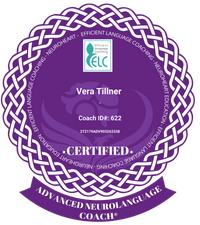Suchen
Kategorien
2025-04-23
Why Your Brain Loves to Learn While You Move
I took up Line Dancing as a new hobby two years ago and I’ve been fascinated by it from the first session. Not only can I literally feel my brain cells working while learning a new choreography. It also lifts my mood within a few minutes into the movements - every time!
Ever noticed how ideas seem to flow more freely during a walk—or how a dance class leaves you not just energized, but mentally sharp? It’s not just your imagination. Science is increasingly showing that movement fuels cognition. Whether it’s pacing during a phone call or dancing your heart out, physical activity lights up your brain in powerful ways.
Let’s explore why your brain loves to learn when your body is in motion—and how you can use this connection to boost memory, creativity, and focus.
The Brain-Body Connection
Movement does more than build muscle or burn calories. It increases blood flow to the brain, delivering oxygen and nutrients that sharpen focus, enhance memory, and improve mood. Physical activity also triggers the release of neurotransmitters like dopamine and serotonin, which support learning and motivation.
Activities that involve coordination and rhythm—like walking, yoga, or dance—engage multiple areas of the brain at once. This rich stimulation strengthens the connections between brain regions and encourages neuroplasticity, your brain’s ability to rewire and adapt.
Synchronized Brains: What Line Dancing and Neurons Have in Common
A fascinating study by the Max Planck Institute (1) compared the synchronized firing of neurons in the brain to fireflies flashing in harmony or dancers moving in unison. This synchronized activity isn’t just beautiful—it’s essential to how we think and learn.
When neurons fire in sync, they communicate more efficiently. Similarly, when we move rhythmically—alone or in a group—we strengthen these neural pathways. Dancing, in particular, acts like a brain workout that reinforces this synchronization.
Dance: A Cognitive Powerhouse
According to Harvard Medical School (2), dance is unique in the way it stimulates the brain. It combines movement, rhythm, memory, and social interaction—all of which support long-term cognitive health.
In fact, research shows that dance may reduce the risk of dementia more than other forms of physical activity. It forces the brain to stay alert and adaptable as you learn choreography, respond to music, and interact with others. It’s exercise, mindfulness, and joy—all rolled into one.
Boosting Brain Plasticity Through Movement
As we age, keeping the brain flexible becomes even more important. A study covered by the Deutsches Gesundheitsportal (3) showed that older adults who engaged in regular dance training experienced measurable improvements in neuroplasticity.
In other words, dancing didn’t just make them feel better—it physically reshaped their brains. Learning and repeating complex movements, navigating spatial patterns, and adapting to new routines all contributed to improved memory and cognitive resilience.
Why Movement Enhances Learning
The idea of “embodied cognition” suggests that our thinking is deeply influenced by our physical bodies. That’s why using gestures can improve memory, or why kids often learn better after recess. Movement grounds abstract concepts in experience, making them easier to understand and recall.
Even simple actions like walking while brainstorming or standing during meetings can spark new ideas and improve concentration. The takeaway? Sitting still isn’t always the smartest way to learn.
Try It Yourself: Tips to Learn While You Move
You don’t need to sign up for a tango class to get started. Here are a few ways to bring more movement into your learning and thinking routines:
- Walk and Talk: Take calls or meetings on the move.
- Dance It Out: Use short dance breaks between tasks to reset your brain.
- Stretch Sessions: Incorporate light stretching while reading or reviewing notes.
- Gesture to Learn: Use hand movements to explain concepts
out loud—it reinforces memory.
- Move in Groups: Join a class or club that gets you thinking and moving at the same time.
Conclusion: Your Brain Was Built to Move
Your brain isn’t just a thinking machine—it’s a dynamic, adaptable system that thrives on movement. Whether you’re studying for a test, solving a problem, or just trying to stay sharp as you age, adding some motion to your day could be the smartest move you make.
So the next time you’re stuck on an idea or feeling foggy, try standing up. Take a walk. Put on your favorite song and move. Your brain will thank you.
Sources:
(1) Line Dance und Neuronen
(2) Dancing Brain
(3) Neuroplastizität
Admin - 11:50:00 @ Language Learning | Kommentar hinzufügen








Keine neuen Kommentare